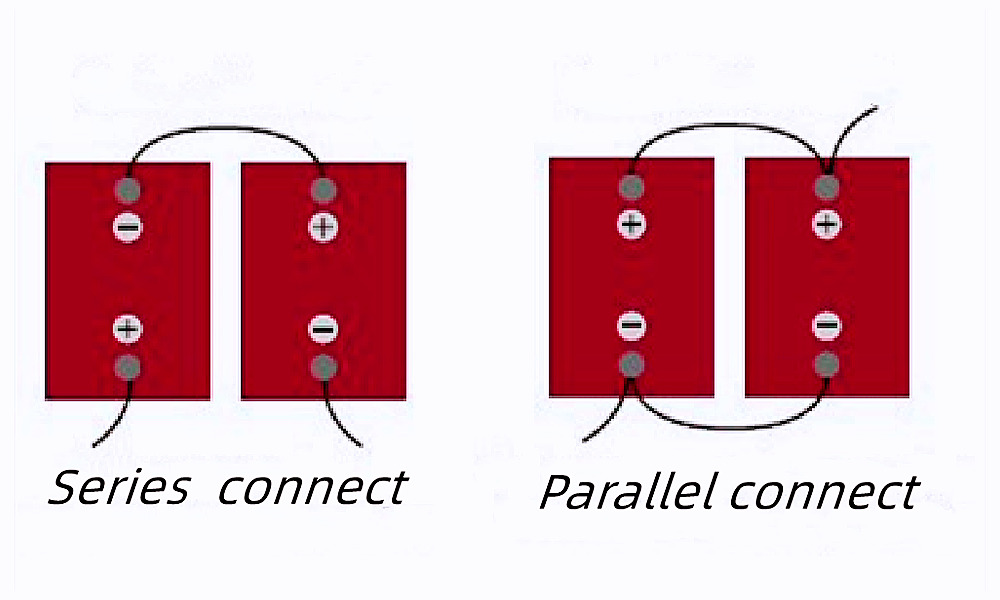Best Series And Parallel Connection Of Lithium Ions one of the most frequently asked questions is “I need more power! How many ampere-hours or volts can this battery have?” The answer is yes.
All of our batteries can be connected to generate more power to run larger electronics or extra capacity. This is called a series or parallel battery.
1. The lithium-ion battery in series
Most batteries are series-connected, meaning the cells are arranged in a series string. In this configuration, the Positive (-) of one cell is connected to the Negative (-) of the next cell, and so on until the end of the series string.
The total voltage of a series-connected battery is equal to the sum of the voltages of all the individual cells. For example, if you have four 3.7V cells in series, the total battery voltage will be 4 x 3.7V or 14.8V.

2. Lithium-ion batteries in parallel
In contrast, parallel-connected batteries have their Positive (-) sides connected together, and their Negative (-) sides connected together. So if you have four 3.7V cells in parallel, the total voltage will still be 3.7V, but the capacity (or amp-hour rating) will be four times that of a single cell.
This is because, in a parallel connection, current flows through multiple paths (via each individual cell), so more charge can be delivered than in a series connection where the charge has only one path to follow.
Lithium ion batteries are usually made up of multiple series strings connected in parallel – this is known as a parallel/series.
The key difference between series and parallel circuits is the way that they distribute power. In a series circuit, all of the components are connected in line with each other.
This means that if one component fails, the entire circuit will be interrupted. However, in a parallel circuit, each component has its own distinct path. As such, if one component fails, the rest of the circuit will continue to function.

3. Things to note about series-parallel connection
There are a few things to keep in mind when connecting series-parallel lithium ion batteries.
First, it’s important to ensure that all batteries are of the same type and capacity. Mixing and matching battery types can lead to problems with charging and performance.
Second, when connecting series-parallel batteries, it’s important to follow the correct order. If the batteries are connected out of order, they may not work properly.
Finally, series-parallel connections should be made using quality battery terminals and connector cables. Poorly made connections can lead to heating, fires, and other serious hazards. When used correctly, series-parallel connections can be a great way to get the most out of your lithium ion batteries.

